The new buzz word in the fashion industry seems to be vegan leather. So what is vegan leather and is it ethical, eco friendly and sustainable? In this post we will look at what vegan leather is and the options that are available and also look at vegan or bonded leather vs. genuine leather.
What is vegan leather?
Vegan leather is an alternative to animal leather and comes in a range of different materials from synthetic to natural. It is basically any kind of substitute for leather that is not made from the skin of dead animals. 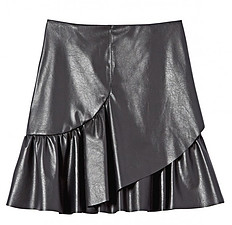
For the most part vegan leather is what we used to call faux leather. There is no difference between vegan, artificial, faux, bonded or synthetic leather – it is all just in the terminology.
Non-natural vegan leather = synthetic / artificial = plastic
It is commonly made from the polymer polyurethane (or PU) or polyvinyl chloride (or PVC) and is sometimes referred to as pleather. It might also contain waxed or glazed cotton, apple peels, paper, cork, kelp, fruit waste, bark cloth, recycled plastic, pineapple leaves and lately mushroom. Pleather is much cheaper than leather and is usually about a third of the cost of real leather. High end vegan leather can cost as much as genuine leather or more.
There are two categories of vegan leather:
- natural or
- non-natural
1. Natural vegan leather alternatives to animal leather
Natural vegan leather is a plant based alternative with options like cork, kelp and pinatex (pineapple leaf fabric). Other plant based options include cotton, linen and denim and more options are discussed below. Durability of natural vegan leather could be an issue in some cases.
1.1 Cork Leather
Cork leather is made from the bark of cork oak trees. 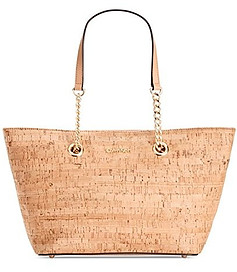 The trees need to be at least 25 years old before the first harvest takes place. The first cork harvest is not usable and the second harvest only takes place nine years later. Once the bark has been removed, it is left to dry for six months. The cork is then steamed and boiled to give it extra elasticity.
The trees need to be at least 25 years old before the first harvest takes place. The first cork harvest is not usable and the second harvest only takes place nine years later. Once the bark has been removed, it is left to dry for six months. The cork is then steamed and boiled to give it extra elasticity.
Blocks of cork are then cut into thin sheets and fabric backing is attached as a support. The end product is durable and is used for upholstery and in the fashion industry. It is waterproof, stain and tear resistant, easy to maintain, eco-friendly and ecological looks unique. Further advantages are that it is easy to recycle and completely natural and sustainable.
This plant based vegan leather is soft and stylish, it has a special feel, low maintenance, slow burning, light (cork can float), elastic, available in different colours, insulating and hypoallergenic (it doesn’t absorb dust so no problems for allergy and asthma sufferers).
Harvested cork trees absorb 3 to 5 times more carbon dioxide than unharvested trees, so thereby reducing air pollution. It takes nine years to regrow the bark, but it prolongs the lifespan of a tree by up to 300 years. Portugal is the main supplier of cork.
1.2 Waxed cotton 
Waxed cotton fabric is made by soaking cotton in beeswax or paraffin and weaving it into the cloth. Cotton is impregnated with wax but many years ago linseed oil was also used. It is the oldest vegetarian leather but if beeswax is used, it is not strictly speaking vegan.
Waxed cotton is commonly used for waterproofed products and Barbour is one of the most well-known names for making jackets and outer garments. It is durable and looks similar to distressed leather. As it is water resistant, it is also used for bags and sails.
1.3 Pinatex
Pinatex is a natural fiber leather alternative that is made from Pineapple leaf fiber and here you can read more about it.
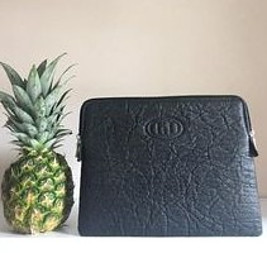
It was developed over a period of several years and is an innovative and new leather substitute and another sustainable option.
The pineapple leaves are gathered after the pineapple harvest has been brought in and goes through a process of decortication to extract the fibers. Decortication is the removal of the external layer of the leaves to expose the fibers.
The fibers are degummed and goes through an industrial process to become a non-woven mesh that forms the basis of pinatex. Pinatex is strong, versatile, breathable, soft and light and can easily be printed on, cut and stitched. It is being made into footwear and fashion accessories and can be used in interiors, furnishings and the automotive and aeronautical industries.
1.4 Mushroom – MuSkin looks very similar to animal leather, but it is a vegan product which is organic,  gluten free and chemical free. It has a marble velvety surface with high absorbency and anti-bacterial and antiseptic properties. Because the fibers are highly absorbent it can be used as insoles to absorb moisture in shoes and it has successfully been used to improve athlete’s foot.
gluten free and chemical free. It has a marble velvety surface with high absorbency and anti-bacterial and antiseptic properties. Because the fibers are highly absorbent it can be used as insoles to absorb moisture in shoes and it has successfully been used to improve athlete’s foot.
MuSkin is non-toxic and doesn’t cause allergic reactions so it is ideal to be used for products that come into direct contact with the skin. Read more about this innovative vegan leather in a previous post.
1.5 Wood leather – Italian technology, using trees from sustainable plantations with American Walnut as a limited edition, has been patented. More development is still taking place on this.
2. Non-natural vegan leather
Non-natural or synthetic leather is made from plastic and is also known as faux leather, imitation leather, leatherette, vinyl and corfan. It basically involves bonding a plastic coating to a fabric backing. PVC (polyvinyl chloride) or PU (polyurethane) are both man made fabrics that are treated and dyed to resemble leather. So it is an alternative to genuine or real leather Types of artificial leather:
2.1 PU or Polyurethane Vegan Leather:

The production process of making polyurethane based synthetic leather, involves painting polyurethane in liquid form onto a fabric backing. Making polyurethane into a liquid requires a solvent, which can be highly toxic. Its impact will also depend on the quality of the supply, the way it’s put onto fabric, and the sorts of chemistry used in every step of the manufacturing process.
2.2 PVC or Polyvinyl chloride Vegan Leather: during the production of PVC,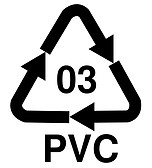 dioxins are released, which is potentially one of the most hazardous chemicals. Increasing the worries about PVC is that substances known as phthalates are also used. Phthalates is used as a plasticiser to make the fabric more flexible. It can leach out and depending on the type of phthalate used, can be toxic.
dioxins are released, which is potentially one of the most hazardous chemicals. Increasing the worries about PVC is that substances known as phthalates are also used. Phthalates is used as a plasticiser to make the fabric more flexible. It can leach out and depending on the type of phthalate used, can be toxic.
Fashion is the second largest most polluting industry after the oil industry and after agriculture, fashion is the second biggest user of water.
Environmental Impact: vegan leather or real leather?
Vegan Leather
- Petro chemicals are used in the manufacturing of most vegan leathers. This makes it not sustainable or renewable.
- PU (polyurethane) and PVC (polyvinyl chloride) are both synthetic plastic based materials. The spectrum of materials used has a range of potential environmental impacts. When PVC is burnt, it releases potentially toxic dioxins and PU requires toxic solvents and contains oil-based polymers made with fossil fuels.
- Vegan or faux leather has many environmental issues with pollution a big problem.
- Most vegan leathers are not eco friendly or sustainable as they are plastic.
- It is plastic at the end of the day which does not biodegrade or break down. Micro plastic is released when it does break down. Neither PU nor PVC decompose and it is very difficult to recycle non-natural vegan leather. It can only be recycled through repurposing, but that is limiting.
Negative impact of leather on environment.
Real Leather
- Cattle is not specifically raised for leather production. Most real leather (animal skin and hides) comes from cattle and livestock that are raised for their meat and milk. It can therefore be argued that hide or real leather is a beneficial by-product of livestock and more sustainable in this regard.
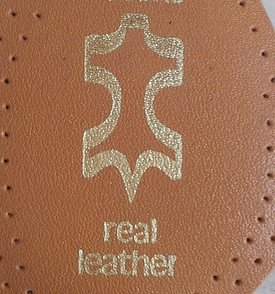
- Raising animal livestock has indirect environmental issues to consider like deforestation, fertilizer use, pesticide use, greenhouse gas emissions from animals and other types of pollution.
- The chemicals used in real leather tanning production includes chromium, formaldehyde, coal-tar derivatives and some finishes that are cyanide base. These chemicals are some of the most environmentally damaging amongst all industries.
- Real leather may have an edge in sustainability because it can last longer than faux leather.
- Leather production causes a huge amount of pollution. For every ton of hide, eighty cubic meters of chromium, formaldehyde, coal tar and pesticide tainted wastewater is dumped. Kanpur area in India is the biggest exporter of leather and polluting the Ganges river is a massive problem.
- Genuine leather can usually be recycled and an animal hide or skin breaks down easier and quicker than a synthetic petrochemical based vegan leather.
Even ethical leather is not perfect. All animal leather means that an animal has been killed.
Is vegan leather really better?
That to me is a very controversial and debatable question.
Vegan leather might not require killing animals, but it uses plastic which comes with many problems. Plastic pollution with dioxins, which is the worst chemical and also a by-product of many industrial processes, is very worrying. Dioxin causes malfunction of the immune system and nervous system, it causes skin rashes and damage to the liver. It also significantly increases the chances of getting cancer.
Also other chemicals like phosphates and bisphenol A are released during vegan leather production. Vegan leather in car seats might be a low maintenance option, but it is not porous. This means no air passes through it making you sweat and stick to it when sitting on it.
So there are many advantages and disadvantages to both vegan leather and real leather.
So what are my options or alternatives?
Plastic based vegan leather uses the most toxic plastic and poses serious health threats, so stay away from plastic. Ideally avoid plastics and other synthetics and rather choose natural materials such as cotton, cork and kelp.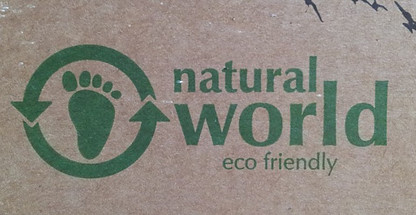 Given all that, I’m left wondering if modern leather tanning processes are not just as environmentally damaging as some of the plastics we use in clothing and furnishings such as polyester and nylon. Vegan leather technology is advancing to help make it more environmentally friendly and sustainable.
Given all that, I’m left wondering if modern leather tanning processes are not just as environmentally damaging as some of the plastics we use in clothing and furnishings such as polyester and nylon. Vegan leather technology is advancing to help make it more environmentally friendly and sustainable.
Personally I don’t like wearing non-natural vegan leather as synthetic leather doesn’t breathe. Synthetic leather footwear makes my feet hot and sweaty and my feet also end up smelling. So at the moment I either choose real leather or organic cotton for footwear, but never plastic.
Related Post: 15 Best Sustainable Materials for Shoes.
Please feel free to leave your questions and comments below and I will get back to you.

Hi, excellent article. I am 66 years old. Wool are the warmest coats you can wear and they last decades when taken care of. My same experience with genuine Leather for shoes, purses, furniture, clothing. The things I purchase last for decades and they’re still in excellent condition. I would never purchase plastic or vegan leather again. Wear plastic pants when you’re cold-you’ll be sweating in minutes. Vegan purses are cheap and don’t last like leather. Automobiles with leather seats get softer with age and breathe. Leather shoes don’t suffocate you feet and make them smell bad. Vegan leather shoes are uncomfortable, don’t last and I’m AGAINST Vegan leather because it really harms the environment and it just plain sucks.
Thank you for sharing your thoughts on vegan leather vs real leather. Although animal rights activists promote vegan leather, vegan leather is predominantly plastic, made from unsustainable resources which is harmful to the planet and our health.
Hello there thanks for the review on real and vegan leathers, it was really helpful. For me I think vegan leather can not be compared to real or animal skin leather. Real leathers are more stronger and have greater life span than vegan leather. I have used some vegan leather materials and they didn’t last ling although they have beautiful appearance
Hi there, vegan leather is normally synthetically produced using petrochemicals and real leather is a natural product. Natural products like cork leather is also a vegan leather and is sustainable, whereas synthetically produced vegan leather is not sustainable. All the best, Liné
Hey such an interesting article you gat here. I have learnt a whole lot of facts from the vegan leather’s. Well both the vegan leather and the real leather are unique in their different production. To me I prefer the real leather for shoes, wallet and belts while the vegan leather (wax contton specifically) for my jacket because it does not have much weight.
Hi there, I think they both have a place, but personally I prefer using natural materials. Most vegan leather is still made from synthetically produced fabric that is derived from petrochemicals, which is harmful to the environment and not sustainable. Sustainable choices, like using recycled plastics or natural fibers like cork, are increasingly becoming available. All the best, Liné
Helooo over there, I must say a big thanks to you for sharing this,
This is really a great insight you’ve open my eyes to see on Vegan leather or real leather. Anyways like you’ve earlier mentioned that a real leather lasts much longer than synthetic vegan leather so think I prefer the real leather. Thanks
Hi there, I’m pleased to hear that you now have a better understanding of the difference between vegan leather and real leather.
Hello Lim , awesome review on vegan leather vs real leather, in further discussion, Vegan leather is often a lot thinner than real leather and much more light weight which is great for fashion as it makes it potentially easier to work with, however it also makes it less durable than real leather and this is because it’s cheaper to produce synthetic plastic leather than it is to produce real leather. So I guess the vegan leather is a go for me…
Hope my choice doesn’t comprehend yours… Thnaks for the awesome review..
Hi Evans, Thanks for your comments, personally I do not like the plastic vegan leather, because I find it uncomfortable to wear and also because of the use of petrochemicals in the production. The production of real leather is also harmful to the environment, and the ideal to me is the sustainable, natural alternatives like cork leather. All the best, Liné
Hi there,
I’m glad I found this site. We were looking for a little something different for our vegan daughter. It is so hard sometimes. Before she decided to go vegan, she loved her leather Doc Martins…. you’ve made the hunt a lot easier. Thank you.
I have to say, cork leather? I didn’t even know about this! I can’t believe the process involved to produce this fabric. What a long time it takes.
I’ll definitely let my daughter know about this site. Thanks.
Hi Kenny, There are more vegan options available these days that are also sustainable, with cork being a personal favourite. I am sure your daughter will enjoy it. All the best, Liné
For a vegan, one will be torn between choosing to go for real leather and plastic leather. Plastic leather is both bad for ones personal health and the environment while real leather means an animal has been killed. To be honest, I didn’t ever think leather was made from pineapples or even mushrooms. That to me is a really big innovation. So, I’ll be looking our for this natural vegan
The other natural vegan leather that you can look out for is waxed cotton and cork. Waxed cotton has been used for many years and also has the weather resistant qualities that one needs. Pinatex and MuSkin are still very expensive because of the small amount that is produced.
After reading your article my conclusion is Vegan leather made from plant based materials is the best way to go.
I loved how you debated the pros and cons of Vegan Leather compared to hide leather. And then how plant based leather can be a great alternative to the quality leather experience
I am all for being environmentally friendly. We have solar panels on our home not only to save money, but also to do our bit for the environment. I shall be looking into plant based Vegan leather.
Edwin
Hi Edwin, I think plant based vegan leather is the way forward, specially with options like cork and waxed cotton. It’s the options for footwear that needs to expand as well.
Cool ! Iso many options to choose from ! I currently don’t wear leather, not because I’m vegan, just because I don’t. But I think it’s really great that we come up with solutions for everything ! My favorite leather in your article is definitely the mushroom leather : “MuSkin”, I liked how there were many different colors in it.
I do wear leather footwear as I think it is still better than the synthetic plastic options. Natural vegan leather is a great choice, specially waxed cotton for products like jackets.
I like vegan leather because it is just as good as the real one. And I am more drawn to it because they do not cost as much and I get to buy new ones often. But after reading your post now, I wonder if it is really worth it. I did not know of the real composition of the faux leather and finding out that it is made of plastic really changes my opinion.
I think I can survive with the real thing and get used to having one new leather jacket every 2 years. The quality is usually great, so it is fine.
Thanks a lot!
Real leather lasts much longer than synthetic vegan leather, so you don’t have to replace items as often. A real leather jacket will last you a lifetime if you look after it, so you will save money and have a lower impact on the environment. Personally I prefer real leather as I don’t like covering my body and my feet in plastic, which is what non-natural vegan leather is at the end of the day.